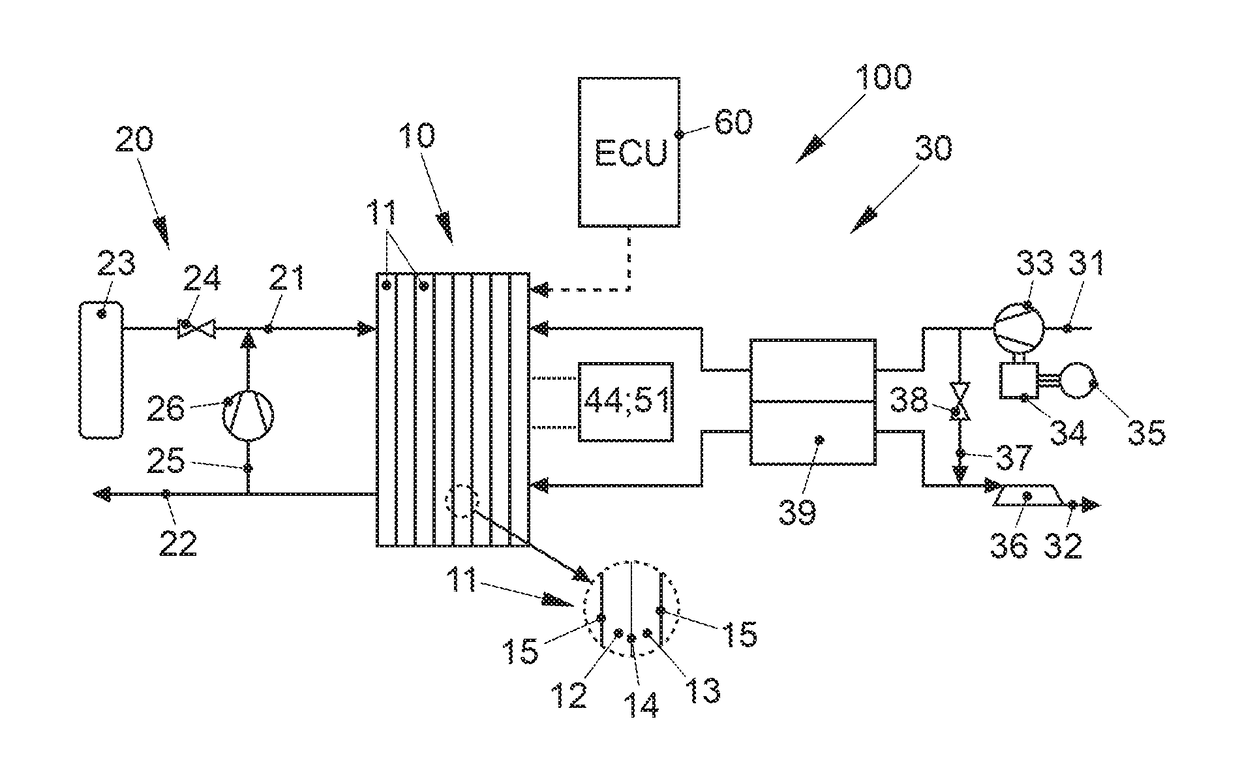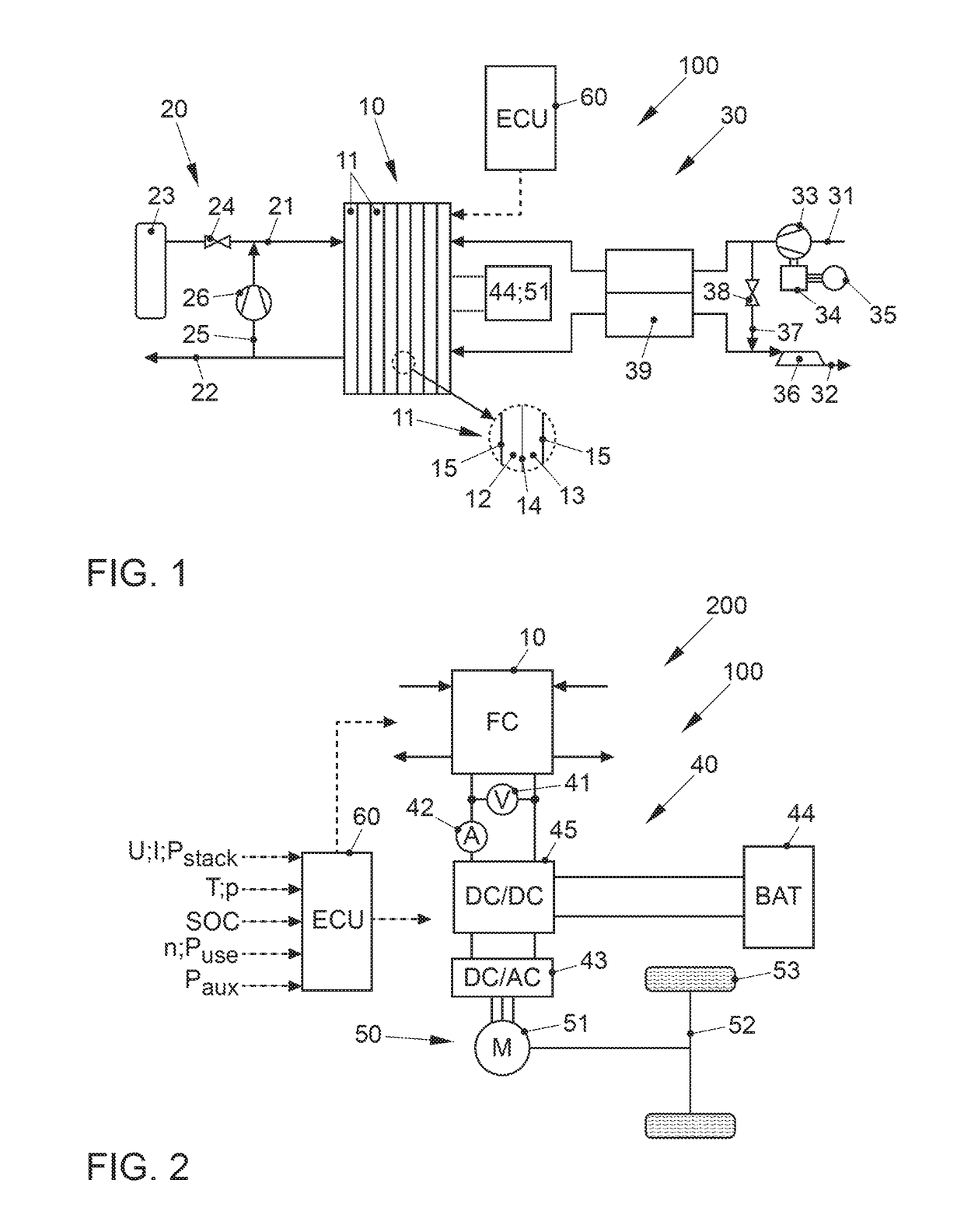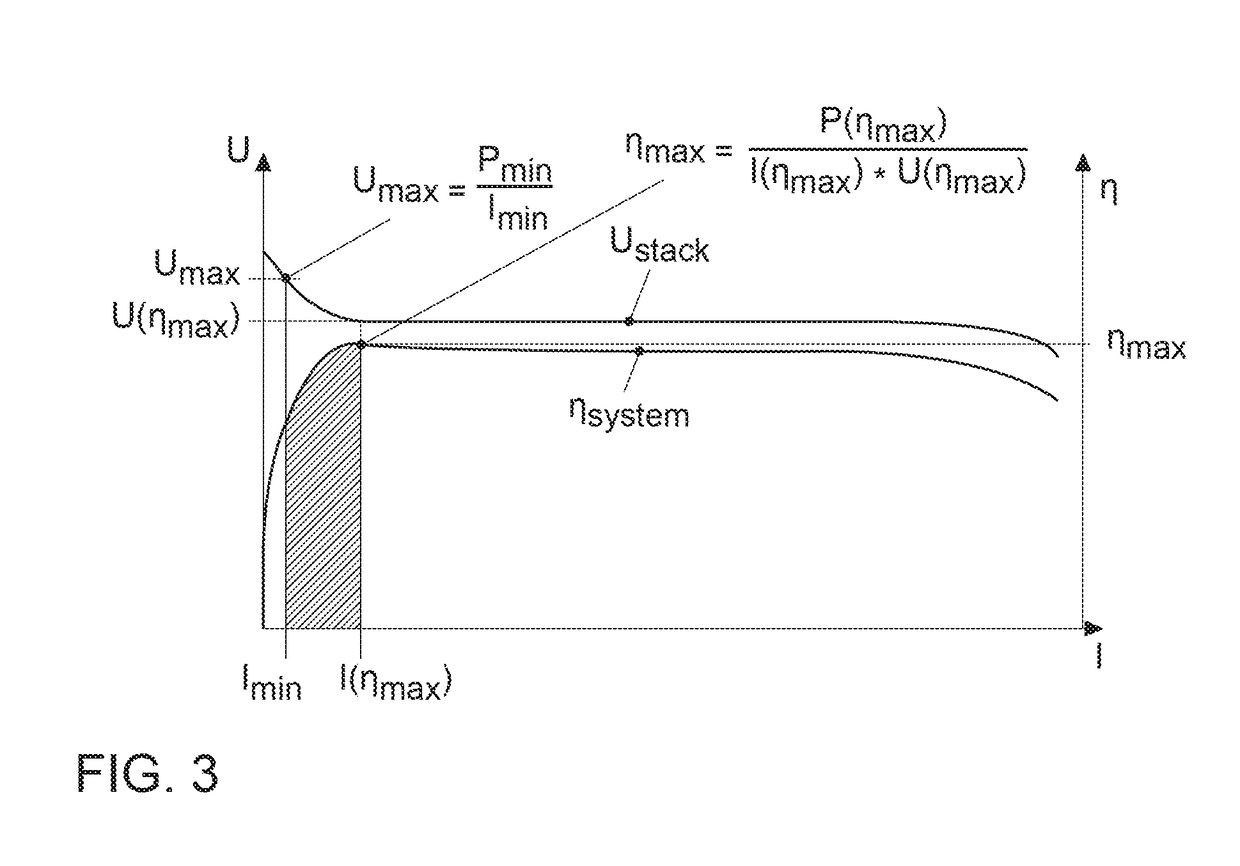Fuel cell system and method for operating a fuel cell system
a fuel cell and system technology, applied in the direction of batteries/cells, electrochemical generators, transportation and packaging, etc., can solve the problems of parasitic power consumption of these components, difference between the electrical power produced by the stack p/sub>stack/sub>and the parasitic power consumption p/sub>aux/sub>, and decrease of available useful power, etc., to achieve optimal fuel cell system dynamic, high degree of interaction, and optimal efficiency
- Summary
- Abstract
- Description
- Claims
- Application Information
AI Technical Summary
Benefits of technology
Problems solved by technology
Method used
Image
Examples
Embodiment Construction
[0045]FIG. 1 shows a fuel cell system, denoted with 100 overall, according to a preferred embodiment of the present disclosure. The fuel cell system 100 is part of a vehicle not shown in further detail, in particular of an electric vehicle, which comprises an electric traction motor, which is supplied with electrical energy by the respective fuel cell system 100.
[0046]The fuel cell system 100 comprises as core components a fuel cell stack 10, which comprises a plurality of individual cells 11, which are arranged in the form of a stack and which are formed by alternately stacked membrane electrode assemblies (MEAs) 14 and bipolar plates 15 (see detailed view). Each individual cell 11 thus respectively comprises an MEA 14 with an ion-conductive polymer electrolyte membrane not shown in more detail here and catalytic electrodes arranged thereon on both sides. These electrodes catalyze the respective partial reaction of the fuel conversion. The anode and cathode electrodes are designed ...
PUM
 Login to View More
Login to View More Abstract
Description
Claims
Application Information
 Login to View More
Login to View More - R&D
- Intellectual Property
- Life Sciences
- Materials
- Tech Scout
- Unparalleled Data Quality
- Higher Quality Content
- 60% Fewer Hallucinations
Browse by: Latest US Patents, China's latest patents, Technical Efficacy Thesaurus, Application Domain, Technology Topic, Popular Technical Reports.
© 2025 PatSnap. All rights reserved.Legal|Privacy policy|Modern Slavery Act Transparency Statement|Sitemap|About US| Contact US: help@patsnap.com



